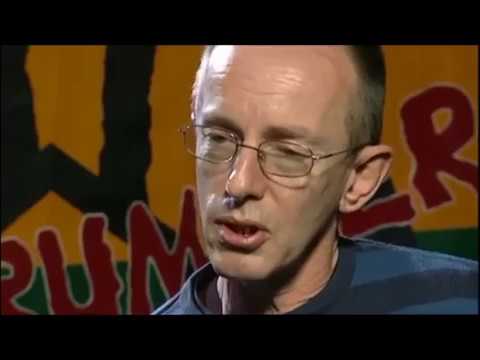
Some records just hold your attention. Rich in atmosphere, colour, and a sense of drama, Galen Ayers and Paul Simonon hit on a seam of gold with their joint endeavour ‘Can We Do Tomorrow Another Day?’. Released to no small degree of acclaim, it found two characters with different backgrounds – Galen a noted solo artist and activist, Paul a punk godfather

– allowing their voices to intertwine. Imbued with a filmic sensibility, the songwriter’s character recalled the tapestries of Tom Waits or the eccentric productions of Joe Meek, moving from the banks of the Seine to the South of France, before returning to sooty old London.
“We’ve had a ball,” says Paul Simonon, taking time out to reflect on the record. The duo are seated outside the Tabernacle, the West London venue and community space which houses their album launch show later this evening. Galen quietly beams at the fruits of their partnership: “The joy of having such a great partner to work with, is that we mirror each other in some ways, but there’s also enough differences and friction to make it interesting.”
“It’s different perspectives,” adds Paul.
The two sketched out the material for the album across a dense series of intricate sessions, making sure each song was right before presenting it to their band. Once the roots were strong enough, the work would just flow. Paul explains: “In a way, the songs dictate how it’s gonna be. The songs have their own personality. It’s like watching a baby grow up – suddenly it’s got traits.”
‘Can We Do Tomorrow Another Day?’ boasts some incredible highlights. ‘Hacia Arriba’ spotlights Galen’s Spanish vocal – the daughter of songwriter Kevin Ayers, she grew up in the heady bohemia of Deià – while ‘Room At The Top’ has a gorgeous 60s pop feel. Galen points out that ‘Never Had A Good Time In Paris’ was “totally spontaneous… by the end we were just giggling and laughing!”
She adds: “For me, it was very organic. We didn’t design the record around a certain sound… that maybe came later, when we were joined by the band.”
There’s a terrific sense of intention around the record, with Paul Simonon contrasting it with his work as a painter. “We’d spend a lot of time together, listening back, cutting and pasting… like moving a sketch around. Then we’d play it the next day with the band. It was like a collage,” he says. Musing on the song-as-painting metaphor, he adds: “It’s like doing a painting, and just as you’re finished you get a knife and chop it all off… it becomes the ghost of what you’ve done.”
Joined by a raft of guests, the songs retain their naturalist feel. “There’s still an intimacy on the record,” Galen says. “Even though you can dance to it, we didn’t want it to feel crowded.”
She continues: “We had an eclectic background to deal with anyway. There’s a French aspect, but also a Spanish tango element. We had a lot to play around with.”
Relaxing outside the venue, the pair seem totally at ease, and thoroughly confident in the results of their partnership. One thing that continually returns during our conversation is the sheer jubilation the album’s construction brought these two artists. “It was a joy,” she says. “It felt like a bunch of people who wanted to hang out as friends – it just so happened we could all play music, and wanted to make a music.”
Paul nods, and chuckles: “I mean, we weren’t knocking back pina coladas… it was work! Working and playing.”
“Finding that spontaneity while also being focussed is an art,” Galen reflects. “And it maybe comes with experience.”
Towards the end of the sessions Galen and Paul brought in Tony Visconti – an enormously respected producer, the long-time Bowie collaborator offered an outside perspective. “He was very magnanimous,” Galen says. “He was very open, easy to deal with. He just wanted the record to sound as good as it possibly could.”
She smiles and adds: “The great thing about having a producer you like and trust is they can act as an arbiter or a referee.”
There’s another high-profile guest, too – Damon Albarn added some flourishes, such as the distinctive melodica that opens ‘A Sea Shanty’. Paul has known him for some years – the pair worked on The Good, The Bad & The Queen together – and surprisingly, Damon doesn’t do that much session work. “Well, Damon said: nobody ever asks me! He just gets asked to make a whole album… no one ever wants a piano part from him. He came off the plane from Australia, really frazzled. He said: Paul, I’m not very good at taking directions! And I was like: great, now you tell me!”
Leave a Reply